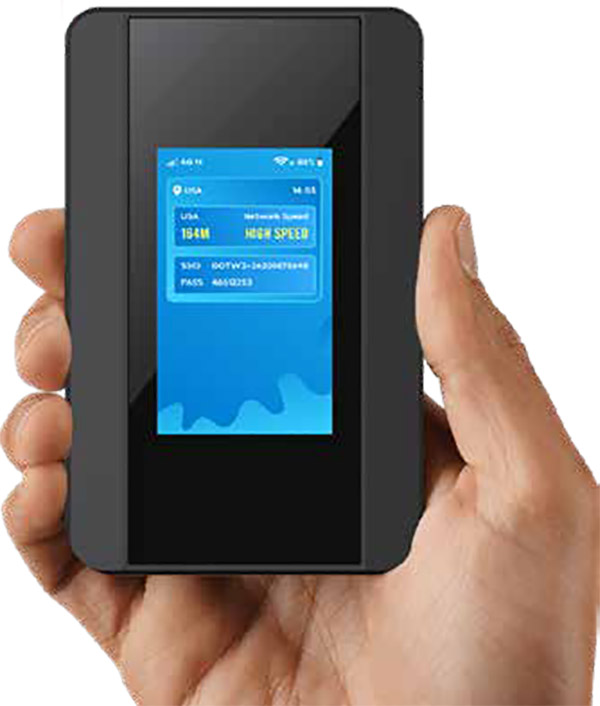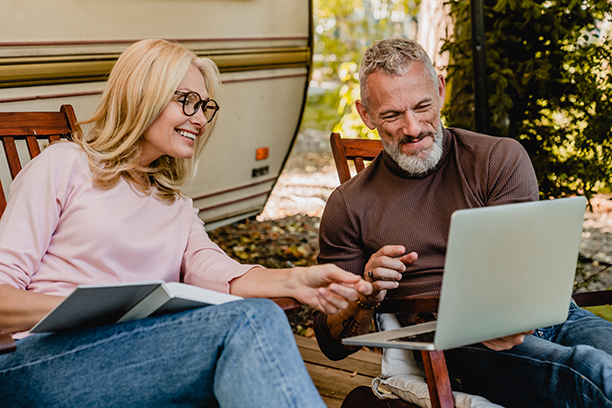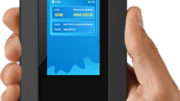This one’s a little tricky to explain. In order to answer it, I need to go through a little bit of explanation.
Why you get bad cell service in campgrounds and RV parks
RV Parks and campgrounds are deliberately out of the way. That’s sort of the whole point of them. If you’re into boondocking, you know that it’s just part of the fun. You don’t want to be just off the highway. You want to be in the middle of nowhere.
Now, your average cell tower in a deeply wooded area only has a range of about a mile. Cell tower signals can reach 5-10 miles in open areas, and in suburban settings they go out 1-2 miles. But if you’re deep in the woods, you’ll get no service unless you’re within a mile of the towers.
The problem is that cell towers take money to run. Cell providers aren’t going to put them up in the middle of nowhere because there aren’t enough people to use them. It’s all business, remember, and that’s the real reason you don’t find cell towers where the population is low. That’s improved somewhat with federal requirements that first responders have cell access in 99% of populated areas, but deep in the woods you’re likely to see the dreaded “no service” more often than not.
The way most people deal with poor cell service
If you have so much as one measly little bar, you can get great cell service by adding a cell phone signal booster. Using a large antenna mounted up as high as possible, a cell booster amplifies weak signals by up to 10,000,000 times and rebroadcasts them. It also takes the signals from your phone and pumps them up so distant towers can see them.
This system works great indoors. It’s designed to help deal with the limitations and problems that come with buildings. Sadly, most energy-efficient building materials are literally designed to block cell signals and that’s not likely to change.
Here’s the problem
Cell phone signal boosters work great inside. They aren’t designed to work outside. In fact, they are specifically designed not to work outside. The problem is the amplified signal. If it reaches a cell tower, it will create a feedback problem. So cell boosters automatically adjust. They generally provide enough boost to cover the inside of the house, office, or car, and maybe a couple of feet beyond. Any more than that and the signal is cut down. It’s all done on purpose. Without that support, the whole cell system could go down. This kind of safeguard is required of every cell booster sold in the US.
So what can you do?
For starters, if you get weak signal outdoors and no signal in the RV, put in a cell booster. If you want better signal outside the RV, open the door and sit in front of it. You’ll get some benefit there. Maybe not a lot, but some. Luckily, there’s a better option.

You can put in a hotspot that takes cell service and turns it into Wi-Fi. Put it in the doorway of the RV and it will blast great Wi-Fi for up to 50 feet. And the best one to get is the GOTSPOT, which is available from Solid Signal. With generous data plans and easy setup, it will keep you connected in as many places as possible. It’s not a solution for when you have absolutely zero cell service, but as long as you have one bar, using a cell phone booster and a GOTSPOT will give you options you never thought you’d have. After all, getting away doesn’t mean getting out of contact now, does it?
Get the help and advice you need
You don’t have to try to figure out what you need all by yourself. Solid Signal and our Signal Connect division help hundreds of RVers just like you every day. We’re here during East Coast business hours and ready to serve! The number is 888-233-7563 and we’re here for you in our Novi, Michigan corporate offices. We know what RVers need and we’re here to help!





